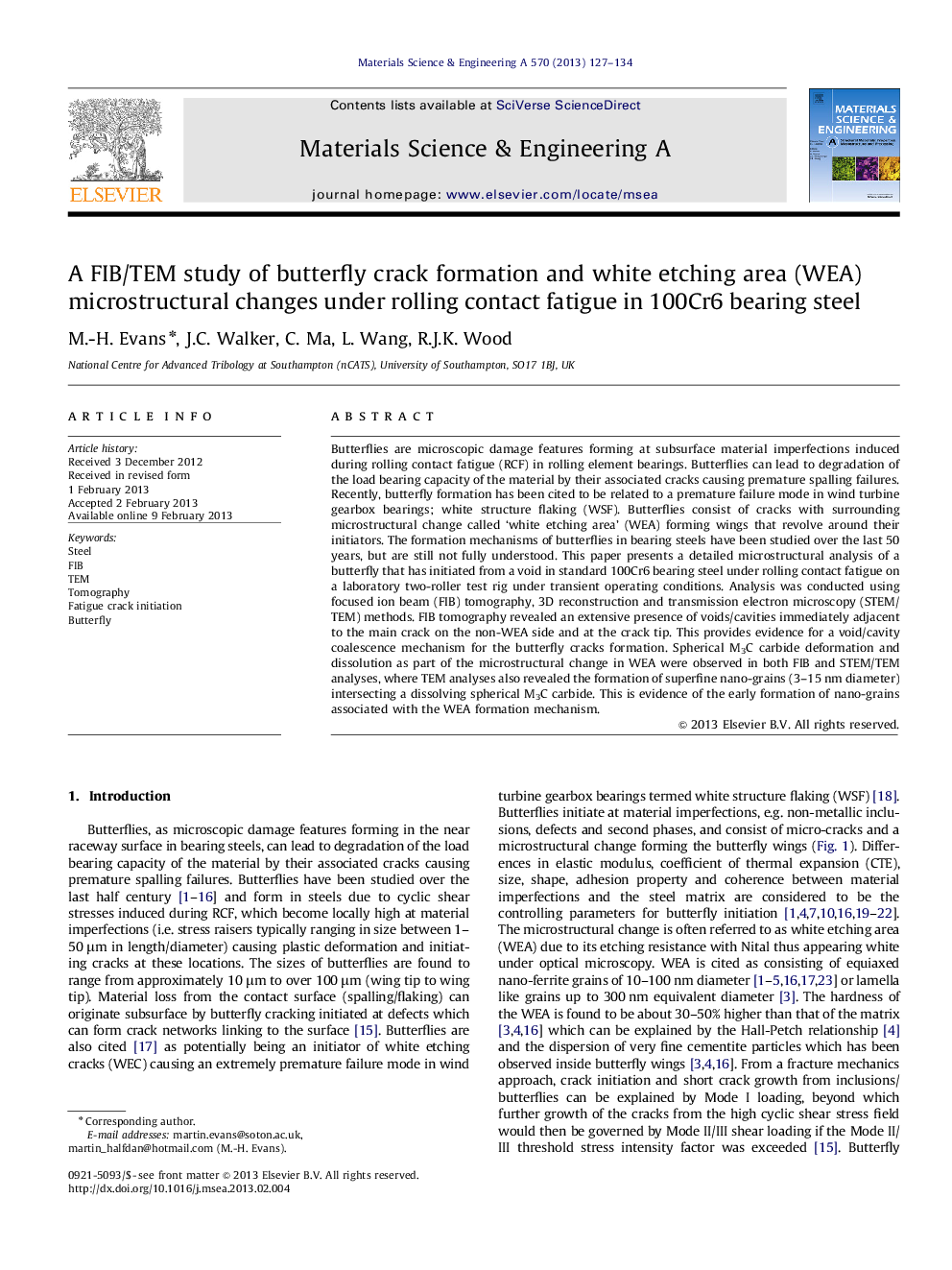| کد مقاله | کد نشریه | سال انتشار | مقاله انگلیسی | نسخه تمام متن |
|---|---|---|---|---|
| 1576295 | 1514773 | 2013 | 8 صفحه PDF | دانلود رایگان |

Butterflies are microscopic damage features forming at subsurface material imperfections induced during rolling contact fatigue (RCF) in rolling element bearings. Butterflies can lead to degradation of the load bearing capacity of the material by their associated cracks causing premature spalling failures. Recently, butterfly formation has been cited to be related to a premature failure mode in wind turbine gearbox bearings; white structure flaking (WSF). Butterflies consist of cracks with surrounding microstructural change called ‘white etching area’ (WEA) forming wings that revolve around their initiators. The formation mechanisms of butterflies in bearing steels have been studied over the last 50 years, but are still not fully understood. This paper presents a detailed microstructural analysis of a butterfly that has initiated from a void in standard 100Cr6 bearing steel under rolling contact fatigue on a laboratory two-roller test rig under transient operating conditions. Analysis was conducted using focused ion beam (FIB) tomography, 3D reconstruction and transmission electron microscopy (STEM/TEM) methods. FIB tomography revealed an extensive presence of voids/cavities immediately adjacent to the main crack on the non-WEA side and at the crack tip. This provides evidence for a void/cavity coalescence mechanism for the butterfly cracks formation. Spherical M3C carbide deformation and dissolution as part of the microstructural change in WEA were observed in both FIB and STEM/TEM analyses, where TEM analyses also revealed the formation of superfine nano-grains (3–15 nm diameter) intersecting a dissolving spherical M3C carbide. This is evidence of the early formation of nano-grains associated with the WEA formation mechanism.
Journal: Materials Science and Engineering: A - Volume 570, 15 May 2013, Pages 127–134